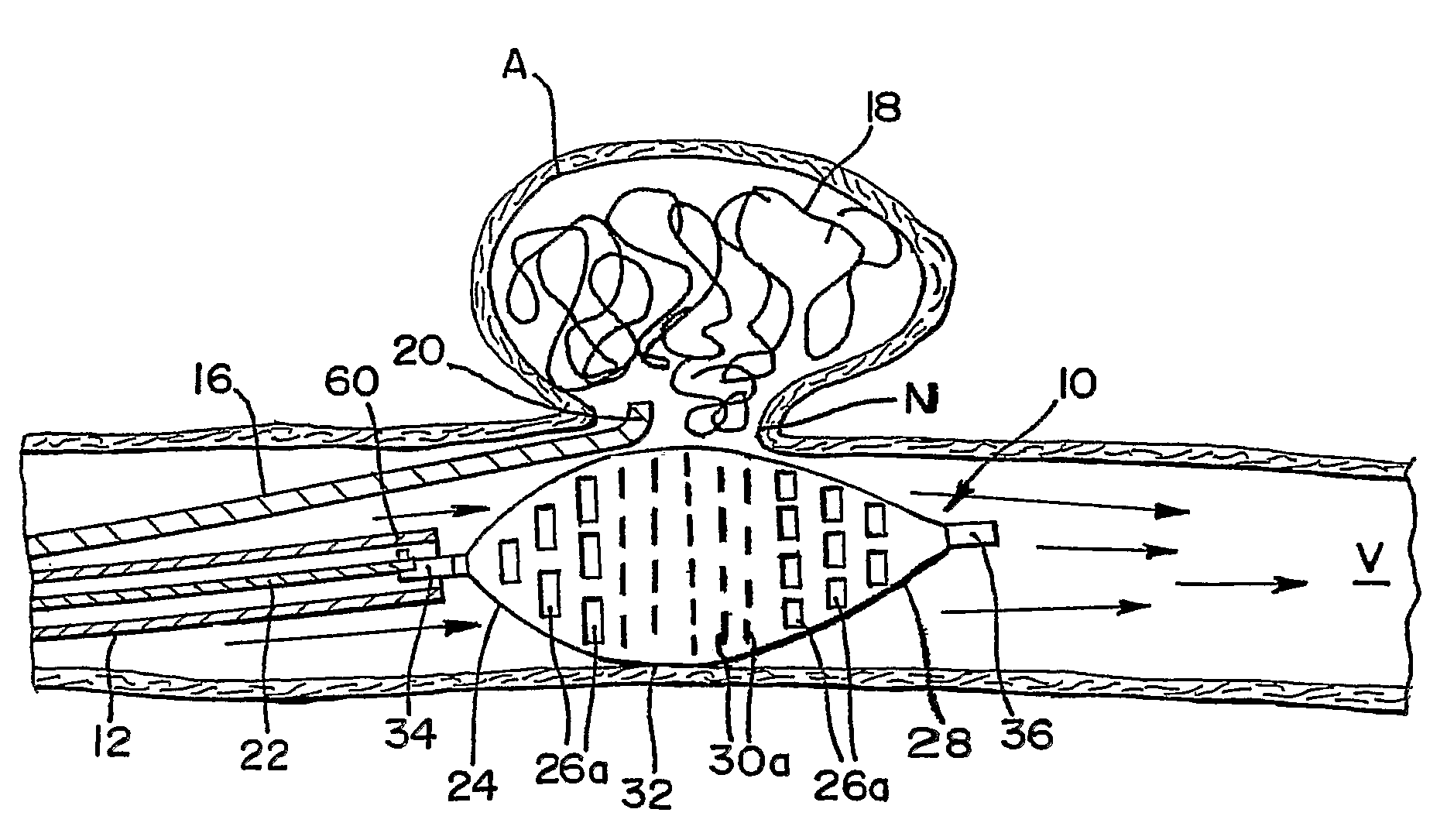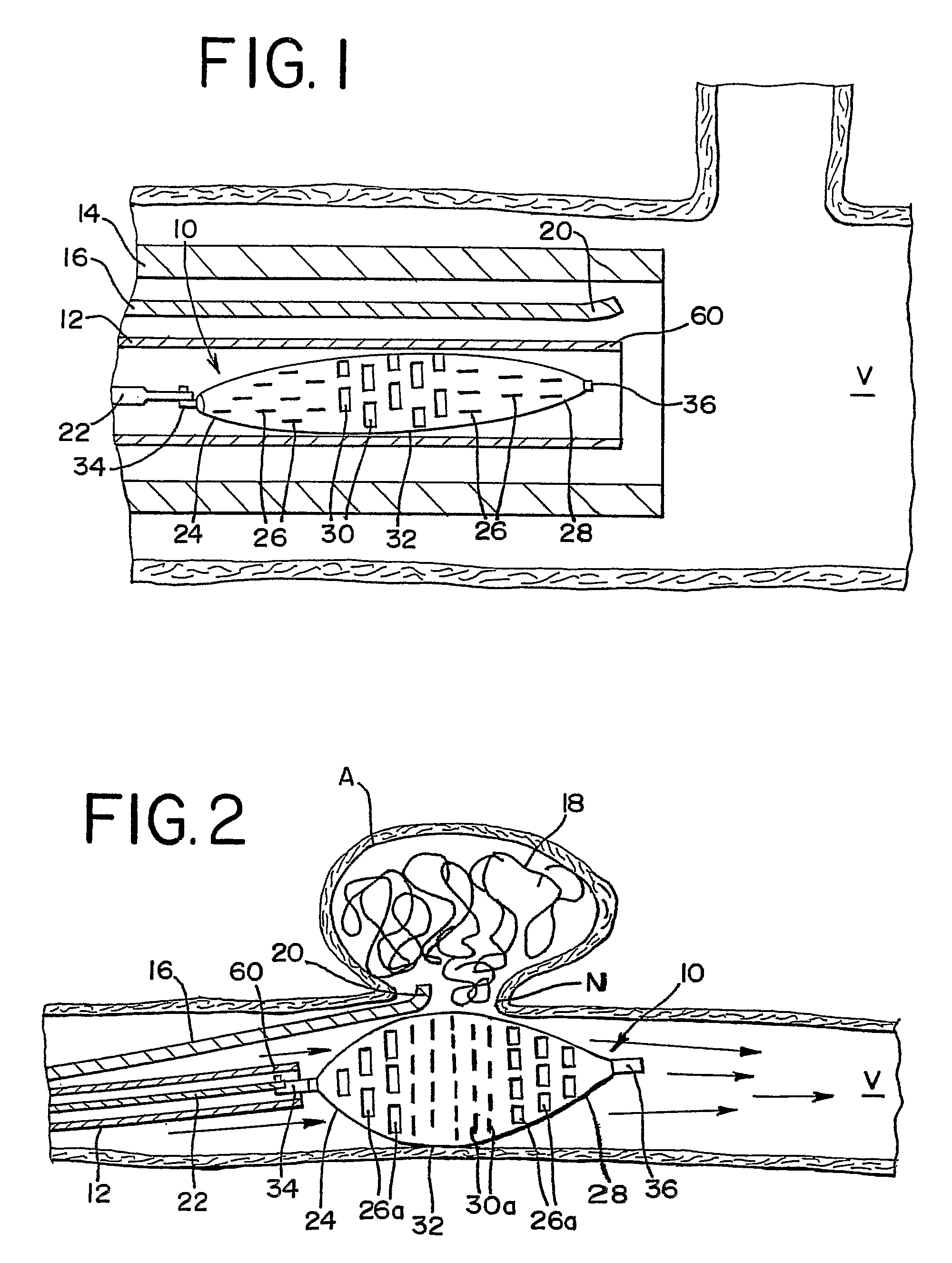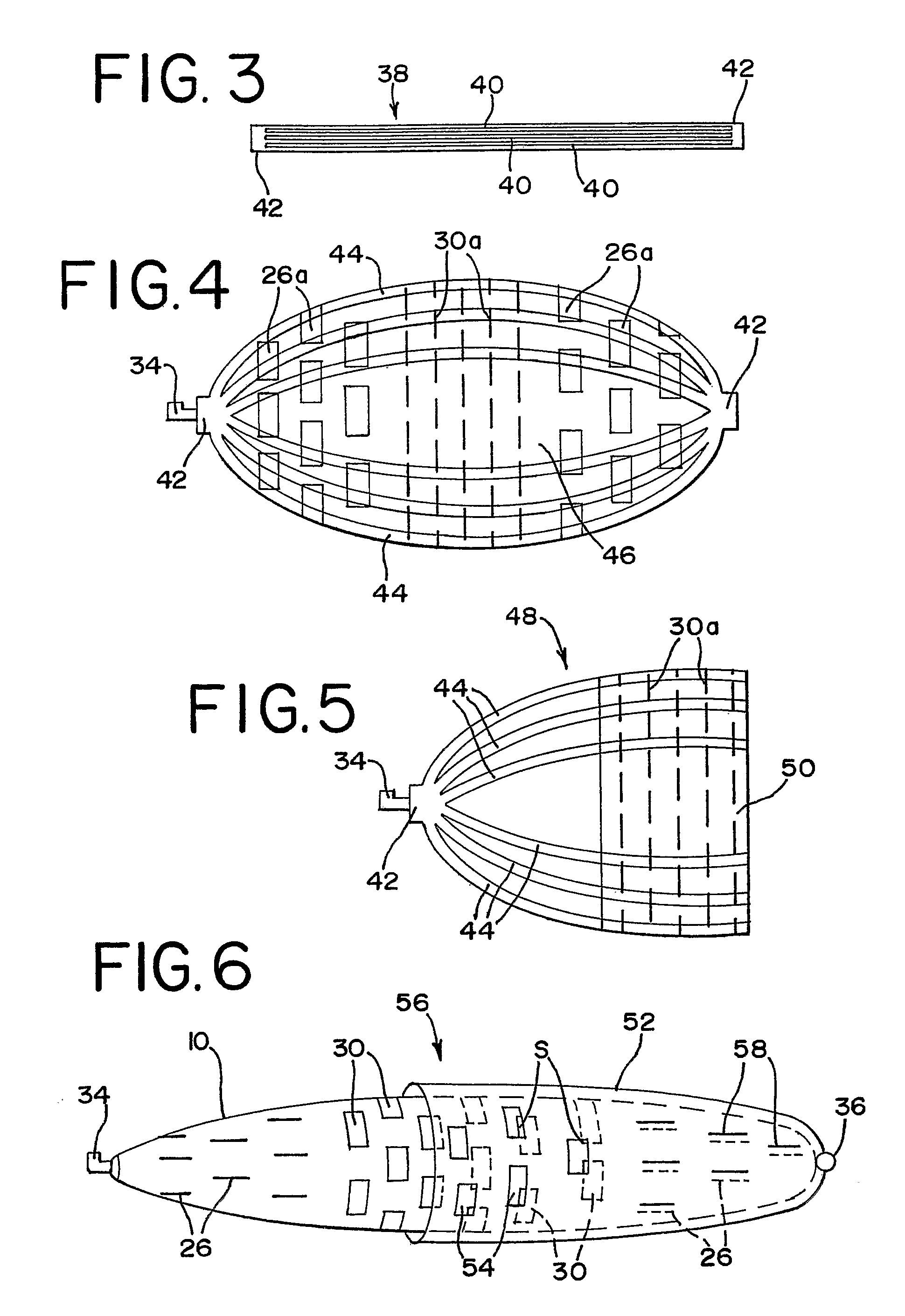Remodeling device for aneurysms
a technology of aneurysms and models, applied in the field of methods and medical devices, can solve the problems of cranial aneurysms, abnormal wall bulging or ballooning outwardly, serious medical complications including mortality, etc., and achieve the effect of facilitating endoluminal deploymen
- Summary
- Abstract
- Description
- Claims
- Application Information
AI Technical Summary
Benefits of technology
Problems solved by technology
Method used
Image
Examples
Embodiment Construction
[0025]As required, detailed embodiments of the present invention are disclosed herein; however, it is to be understood that the disclosed embodiments are merely exemplary of the invention, which may be embodied in various forms. Therefore, specific details disclosed herein are not to be interpreted as limiting, but merely as a basis for the claims and as a representative basis for teaching one skilled in the art to variously employ the present invention in virtually any appropriate manner.
[0026]FIG. 1 illustrates an occlusion device 10 in a collapsed orientation within a delivery catheter 12. The delivery catheter 12 is carried by a gliding catheter 14, which is configured to also carry a microcatheter 16. The microcatheter 16 carries one or more embolic devices or media 18, which can be deployed to a diseased section of the vasculature, such as into an aneurysm, as seen in FIG. 2.
[0027]FIG. 2 shows occlusion device 10 in an expanded or deployed position within a body vessel V, whil...
PUM
 Login to View More
Login to View More Abstract
Description
Claims
Application Information
 Login to View More
Login to View More - R&D
- Intellectual Property
- Life Sciences
- Materials
- Tech Scout
- Unparalleled Data Quality
- Higher Quality Content
- 60% Fewer Hallucinations
Browse by: Latest US Patents, China's latest patents, Technical Efficacy Thesaurus, Application Domain, Technology Topic, Popular Technical Reports.
© 2025 PatSnap. All rights reserved.Legal|Privacy policy|Modern Slavery Act Transparency Statement|Sitemap|About US| Contact US: help@patsnap.com



